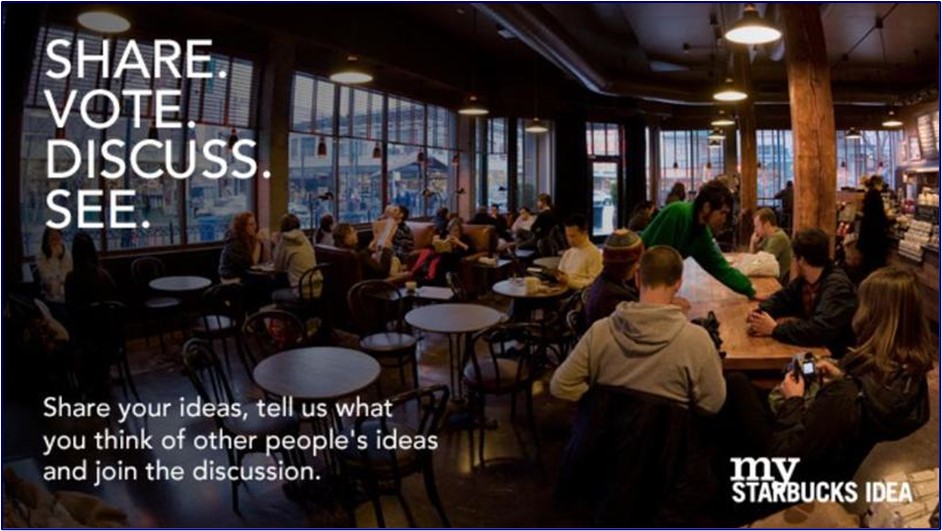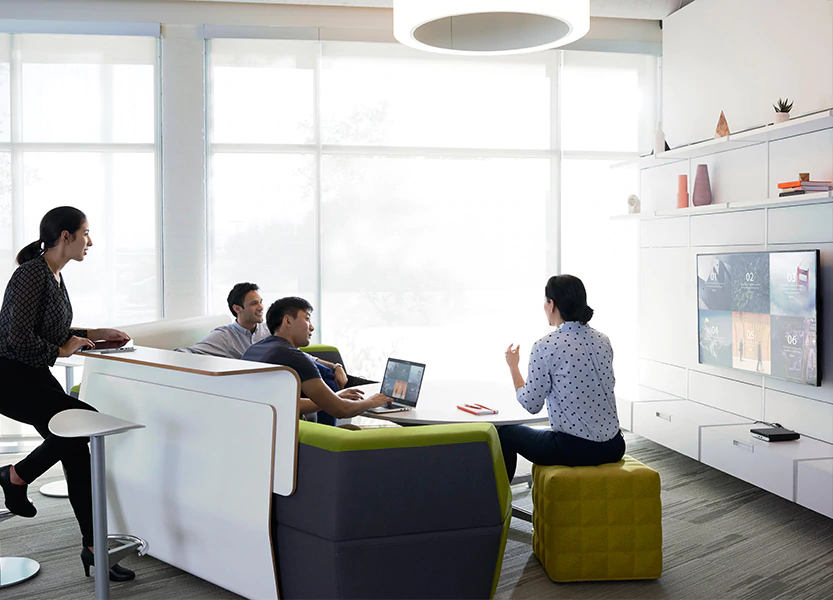The reality in the vast majority of businesses is that the business' leaders have never actually sat down and attempted to define and design – in any explicit manner – the experiences their customers are to have when engaging with their business, nor the experiences their workers are to have when attempting to service these customers. Instead, they have left these matters to historical practice and to chance, and otherwise have hoped for the best. This is as much of a gamble as is selling a new product that's never been validated... it may or may not work well... you simply don't know. And even when it does work acceptably, there still remains the question of whether or not you are delivering an experience that truly differentiates your business and reinforces the promises your brand has made in the market.
This is where explicitly-designed and properly-choreographed customer experiences become so incredibly important. If your business believes that its brand is worth building, and if it believes that it needs to differentiate itself from other options out there that customers can pursue, then it must become absolutely serious about delivering these types of experiences. They are the only means by which your business will be able to truly differentiate itself and thereby build its brand in the marketplace.
But in the vast majority of cases, businesses simply lack the expertise they need to be able to explicitly design and choreograph winning experiences. They need expert assistance in helping them to properly frame, conceive, define, design, and develop these new experiences so that they will in fact differentiate the business and its brand.
Legacy Innovation Group delivers expert assistance in this area via its Customer Experience Workshop. This is an exciting and dynamic workshop where we bring together all of the affected stakeholders in the business and engage them in a comprehensive, collaborative ten-step Customer Experience (CX) design process.
We begin the workshop by first ensuring we have all of the right stakeholders involved. This is critical, as we need to ensure that we have all the right parties in place so that when they have a role to play in delivering the new experience, they are present with us to sign up for delivering on that role and its outcomes.
Second, we lead the team in establishing the goals and objectives, or intended outcomes, of the new experience they will be designing. This is important, as everyone involved must clearly understands these up front. This helps us to ensure that – throughout the whole workshop – the team stays together and focused on pursuing these specific outcomes.
Third, we lead the team in establishing a set of relevant KPIs to be used in gauging the new experience's impact on the business. These serve to ensure that the new experience is producing the intended (positive) ROI for the business. This will involve any number of specific and objective metrics that can be tracked over time so as to gauge the effectiveness of the experience and how it is being delivered. They must of course be meaningful to the business and its top line, and must likewise tie clearly to the outcomes the team outlined in the preceding step.
Fourth (unless done prior to the workshop, which is sometimes the case), we engage the team in defining and documenting customer personas that represent the specific market segments being targeted. These establish who the customers are that will be encountering the new experience. Each such persona will reflect important psychographic and demographic details about that particular segment, as well as what that segment's needs, motivations, and desired outcomes might be at each of the touchpoints involved.
Fifth (unless done prior to the workshop, which is sometimes the case), we engage the team in defining the Brand Experience Lens through which the new experience will be designed. The Brand Experience Lens is that collection of ideas and statements that serves to focus the design and delivery of the experience in such a way as to yield a very particular brand experience. It thus gives the team the guidance they need to create the intended mood and tone for the experience. This allows the experience to thereby serve as a bridge to the business' customers in the way intended and desired by the business.
Sixth, we engage the team in storyboarding the "future story" of this new experience – what the new experience is to look and feel like as it unfolds. This allows the team to have a deep conversation around the experience as it explores each of the experience's nuances. At the same time, we are striving here to ensure the stories we are telling are highly compelling to the targeted customers – so that the stories themselves help the team to capture the vision for this powerful new experience. The act of storyboarding thus serves to engage the team's minds and imaginations, and is where the team will flesh out much of the nuance and detail of what it wants to deliver (albeit not the mechanics of such). It is not uncommon for a team here to explore any number of different future stories in order to compare & contrast different potential experiences against one another. As it does this, the team will eventually work to narrow down these alternatives and focus in on a few ideal stories and experiences to pursue. Ultimately teams will select the one or two most ideal future stories they wish to develop as detailed experience designs.
Seventh, we engage the team in roughing out a preliminary Customer Experience Journey Map (CXJM). This helps the team to first of all understand what are all of the touchpoints involved in realizing the overall customer lifecycle (customer life journey) in this situation. It also helps the team to begin thinking conceptually about who are all of the stakeholders that need to be involved in delivering each of these touchpoints – both as on-stage actors and as backstage supporters. This is undertaken for each of the eight distinct stages of the customer lifecycle, the first four of which deal with the "buy" cycle, and the last four of which deal with the "own" cycle.
Eighth, we engage the team in reviewing and discussing any preexisting research around an existing or surrogate experience. Such research often reveals insights about how that experience has or has not been delivering its intended outcome, and why this has been so (was it more on the customer perception side, or more on the stakeholder delivery side?). We will attempt to draw out here – to the extent the data allows us to do so – any insights into which touchpoints in that situation customers deemed to be of greatest importance, as well as which touchpoints in that situation represented the highest amount of "pain", "angst", "frustration", or "roadblock" for customers (or for stakeholders). Wherever we can find combinations of these two, it can help the team to know where to focus more of its efforts for the sake of differentiation in the new experience.
Ninth, we lead the team in detailing the Customer Experience Journey Map (either all or a portion of it) – complete with undertaking a Cognitive Task Analysis for each of its respective touchpoints. This lets the team understand each specific touchpoint in full detail, including the customer psychology and emotions involved (which relates to their expectations for the touchpoint), the channels (domains) involved, and each stakeholders' specific actions required to deliver that touchpoint, whether they are an on-stage actor or a backstage supporter. This is again undertaken for each of the eight distinct stages of the customer lifecycle.
Tenth, if a new product, service, or business model is involved, and this step is desired, we lead the team in translating the attributes of the customer experience into corresponding product, service, or business model attributes. This serves to ensure that the new product, service, or business model will in fact deliver its part of the overall experience. We do this using our signature Designed Experience Approach to produce a Designed Experience Model, and document this via our Product Experience (PX) Framework.
When the workshop is finished, and the team has completed all of these steps, it will have converged on an optimal experience design that is capable of delivering the experience they had envisioned in the beginning. The end result of this is documented in an Experience Design Brief.
Customer Experience Workshops are typically staged as 3 – 5 day events, and can be held anywhere of your choosing, though they do require an ample amount of vertical working space for storyboarding and experience mapping.
If desired, we can expand this workshop into a Comprehensive Experience Workshop by incorporating into it a matching Business Experience Workshop.
To do this, we would undertake much of the same process, except that in this case we will be looking at the experience from the point of view of the business' workers who must deliver the new customer experience. This is like flipping the coin over and looking at it from the other side It answers the question, "What does the other side of this new customer experience look like?" "Is it an enjoyable one for our workers to stage and deliver?" If the answer to this latter question is "No" – which is to say that the Business Experience is suboptimal – then it will be warranted to revisit the original Customer Experience design and look for new ways to harmonize the two experiences.
Businesses must keep in mind that the best customer experiences (CX) only happen when they are aligned to a winning business experience (BX). Otherwise, customer experiences tend to not live up to how they were designed on paper.
If this is of concern at all, then it is recommended that we also lead the team in the corresponding Business Experience Workshop, so that the business can be confident these two experiences are in harmony with one another, and thus support one another, so that the business will in fact be able to deliver the new customer experience as planned. This results in a comprehensively aligned and balanced CX / BX pair.
To support the BX Workshop, we call upon both the Legacy Innovation CX Journey Map and the Legacy Innovation Service Blueprint. Together these two tools let us analyze and design the experience from the business' point of view.
Comprehensive Experience Workshops (incorporating both the customer experience work and the business experience work) typically require approximately two weeks to complete, and can be held anywhere of your choosing, though they do require an ample amount of vertical working space for storyboarding and experience mapping.
The Customer Experience / Business Experience Workshop Engagement typically follows these steps:

CEOs come and CEOs go. Some are excellent. They generally ‘get it’. Others not so much. They really ‘don't get it’. What makes the difference between these?
READ MORE
There's an insidious debate that's bounced around for probably the better part of twenty years now. It's the debate of whether or not ‘innovation is everyone's job’...
READ MORE
Innovation Spaces – which can refer to any space intentionally designed to foster and facilitate good innovation work – come in all sorts, shapes, and sizes...
READ MOREWe partner with committed business leaders to make their organizations the driving forces in their markets.
CONTACT USSign up for our newsletter.
NEWSLETTER SIGN-UP